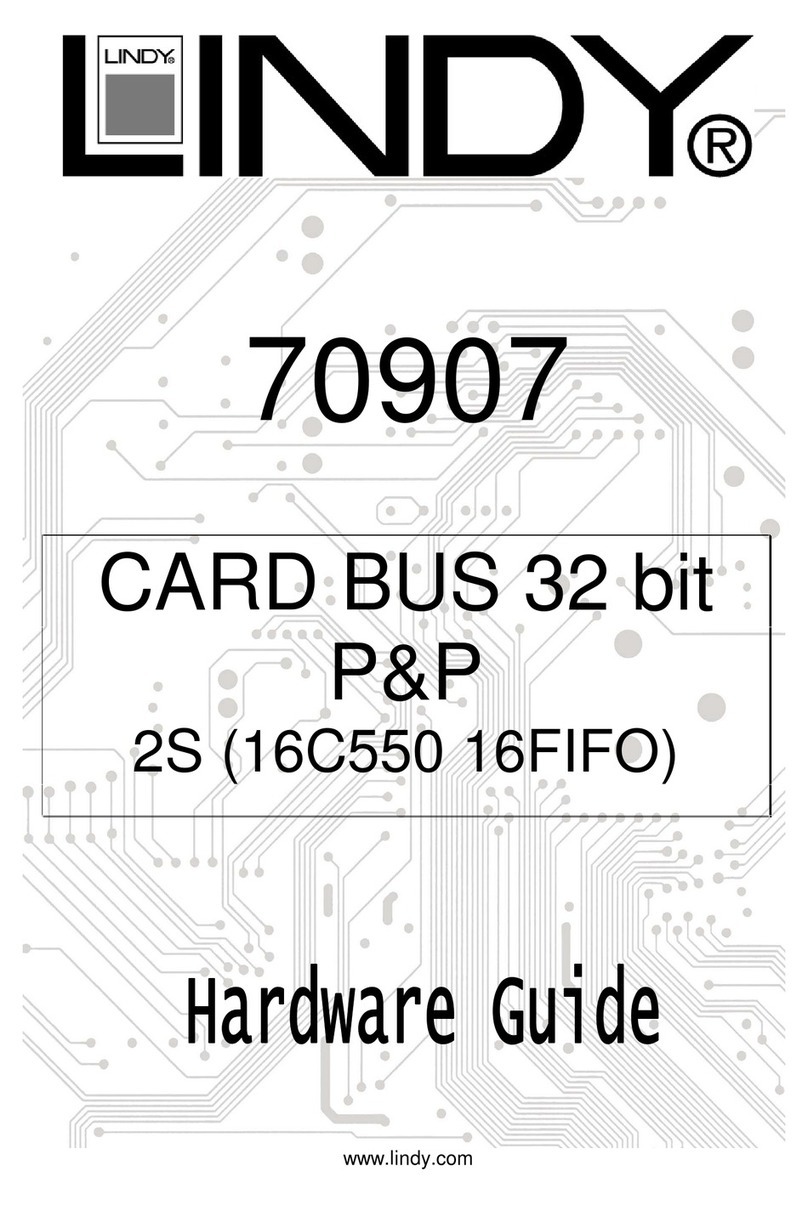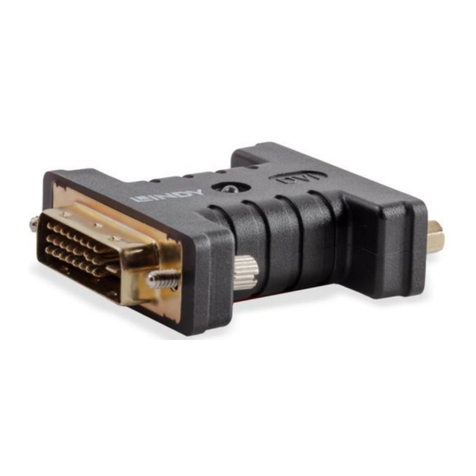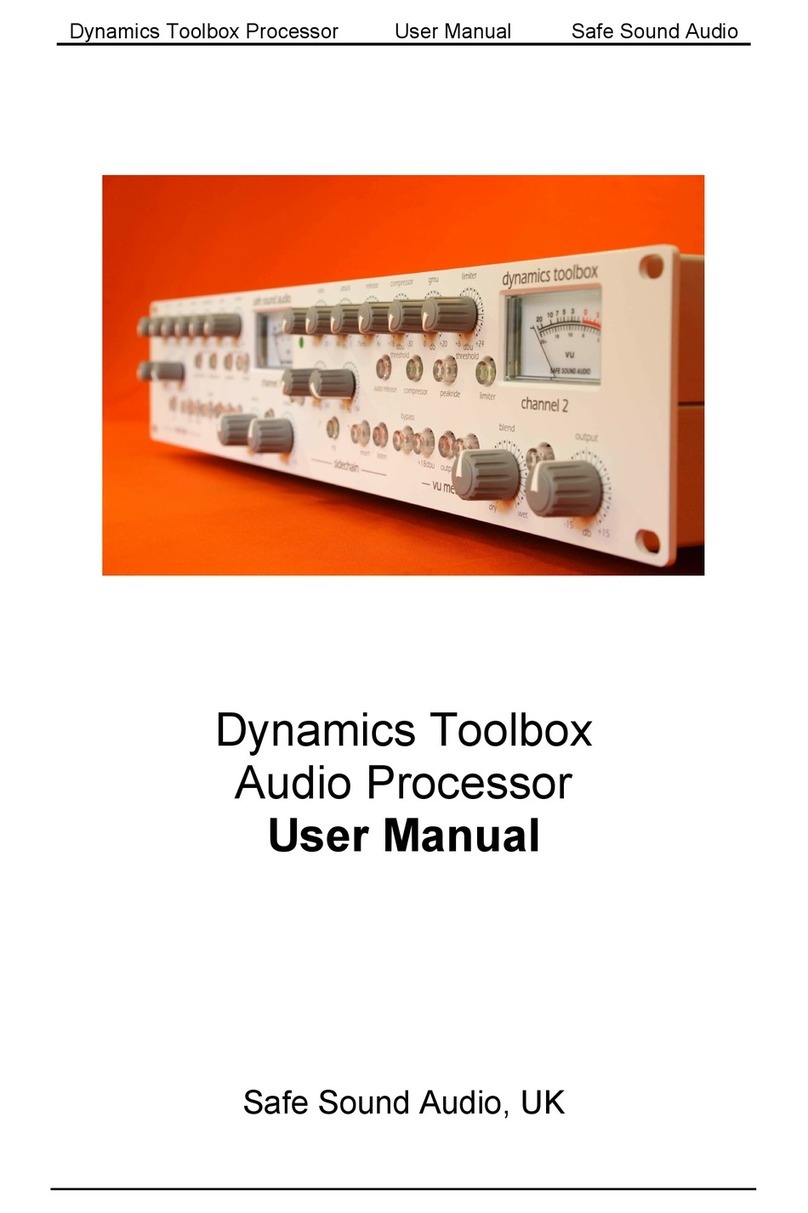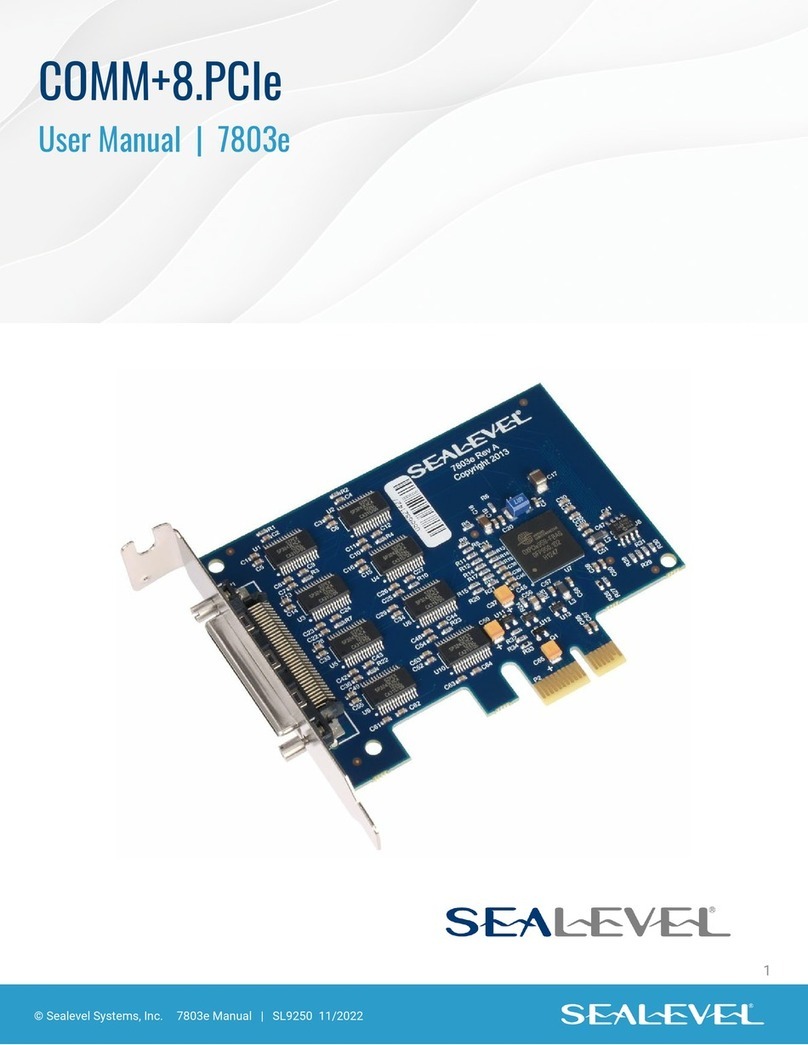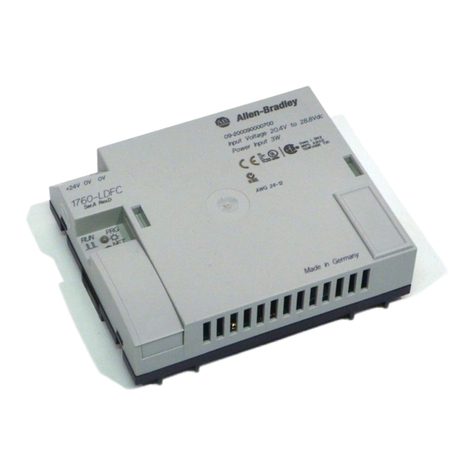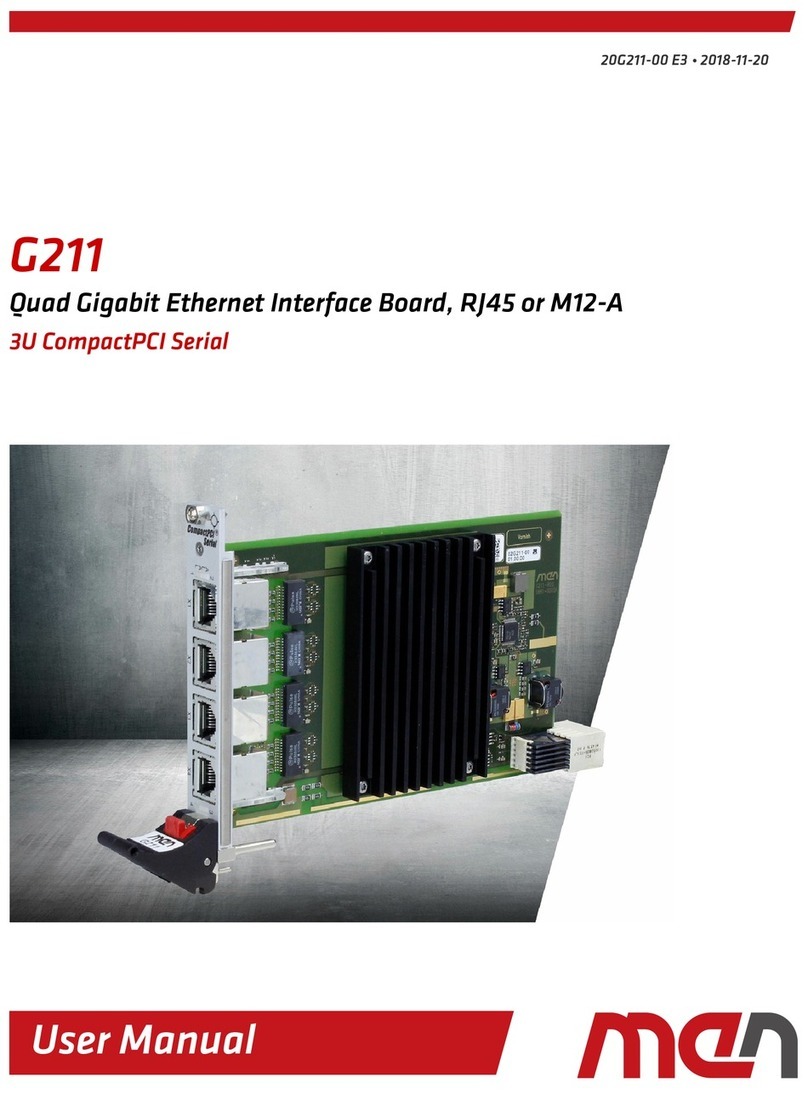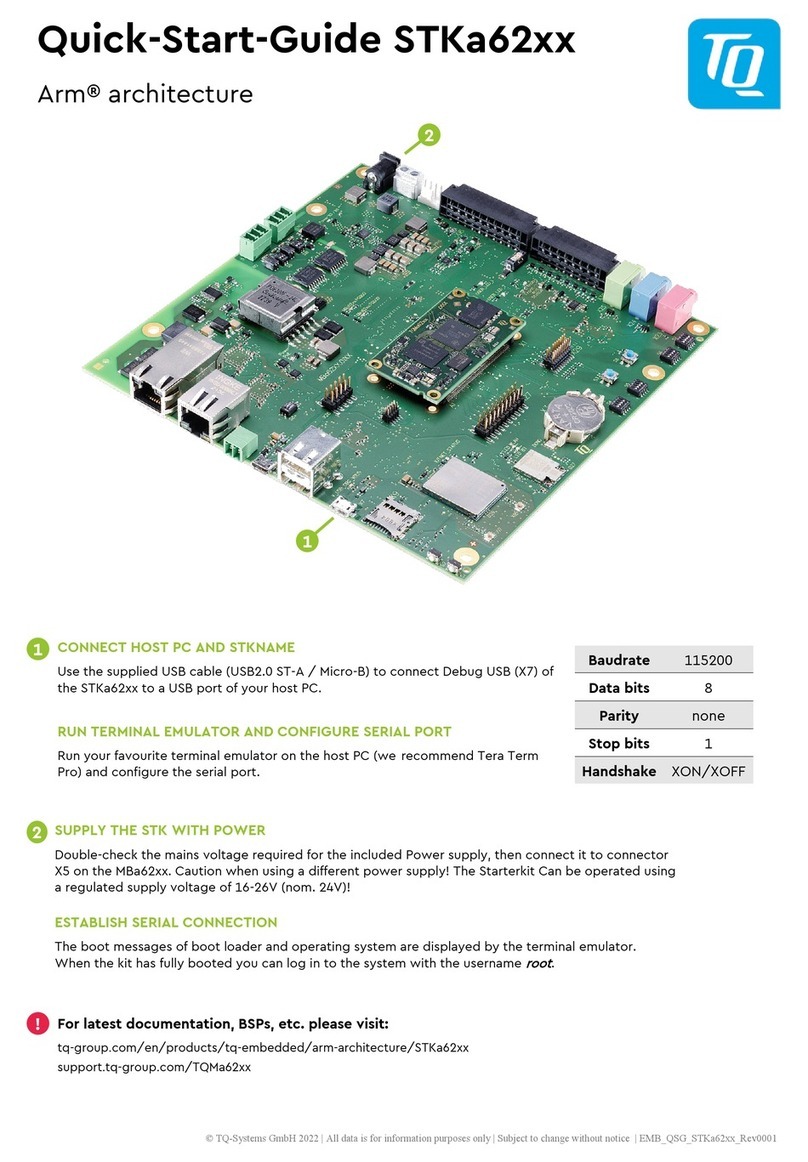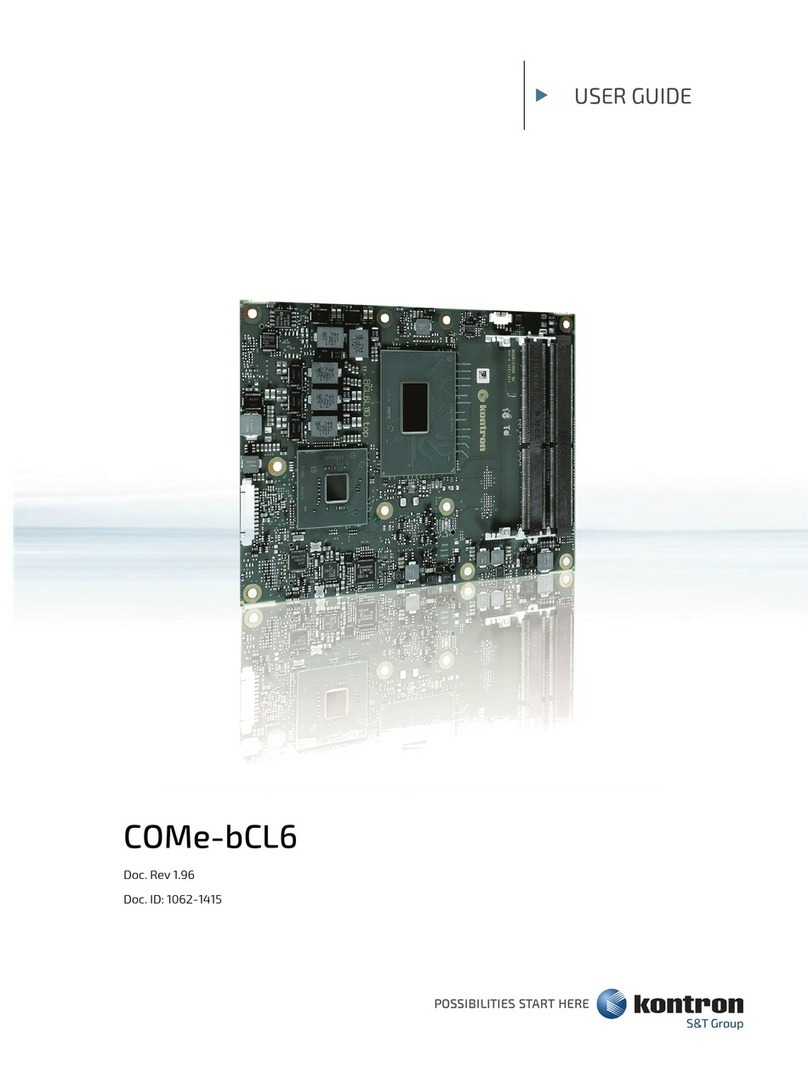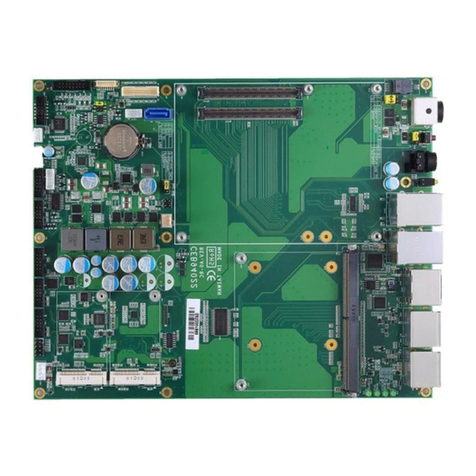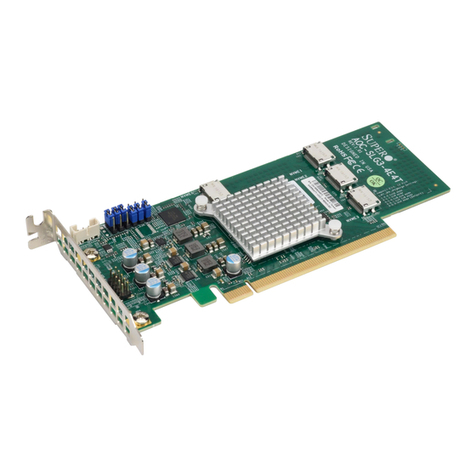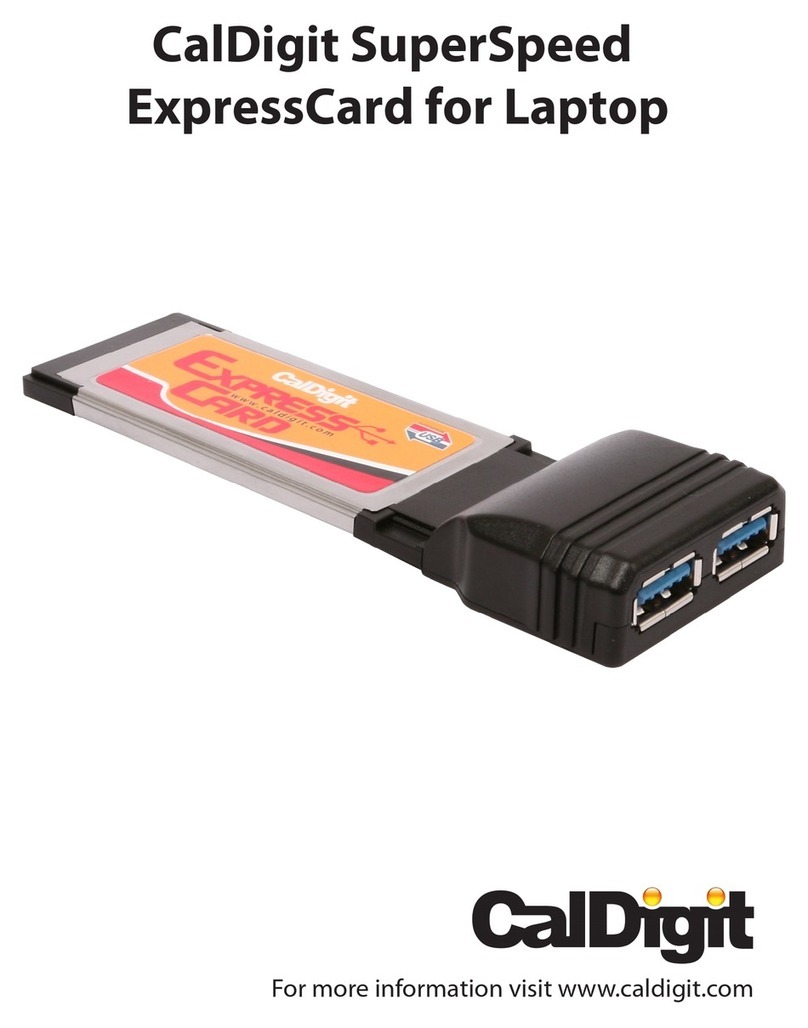Lindy WUBR-501 User manual

Wireless N USB Dongle
User Manual English
LINDY No. 52014
www.lindy.com
Introduction
Thank you for purchasing the LINDY Wireless N USB Dongle. This
product complies with IEEE 802.11n draft 2.0 wireless specifications and
is also backward compatible with 802.11g. This USB Dongle has
integrated MIMO (multi in, multi out) technology which enhances
coverage range and delivers 6x greater performance. With the ability to
achieve incredible data rates of up to 300Mbps, you can enjoy high
speed internet access for data, video and voice at the home or office. To
ensure your wireless network is secure against hackers, the PCI Card
incorporates the latest WPA2 encryption, WPA with AES and TKIP.
Installation
IMPORTANT
Do not install the USB Dongle in your computer till you have
installed the software.
1. Insert the driver CD in to your CD-Rom drive and follow the on
screen instructions
2. Select WUBR-501 and then click next
3. Follow the on screen instructions and then shutdown your
computer
4. Install the PCI card in to your computer and power on
5. Follow the on screen instructions and choose “Install the
software automatically (recommended)…”
6. The configuration utility will appear on the taskbar when the
installation is complete
Wireless Network Setup
Peer-to-Peer: Connects with other wireless client(s)
This option does not require an Access Point. Please make sure
the “Network Name” (SSID or ESSID) and “Peer-to-Peer” channel
are the same for all clients in the same wireless network. Double
click on the Configuration Utility icon to open the utility.
1. Click on “Profile Setting” tab and click “Add” to create a new
profile
2. Enter a profile name then click “Next”
3. Select the “Network Type” and click on the drop-down arrow and
select “Peer-to-Peer”. Then use the up/down arrows to select the
channel number and click “Next”
4. Select “Authentication Mode” to enable the “Encryption” if you
have any security concern. Once you enable the encryption
function, then you should input the corresponding key. Click “Next”
5. In IP Setting select “Enable” or “Disable” to make used of it and
click “Complete” to finish the configuration
Access Point: Connects to the network via an Access Point
1. Click the “AP List” tab
2. Select the wireless network you would like to join from the list
shown
3. Click “Connect” to join the network
4. Input the password required to join the network
Note: You might need to configure a profile if the destination
network has “WEP KEY” protection
Wi-Fi Protected Setup (WPS):
This is a standard for easy and secure establishment of a wireless
home network, created by the Wi-Fi Alliance. The goal of the WPS
protocol is to simplify the process of connecting any home device to
the wireless network. To secure your wireless network, select the
“WPS” button under user interface as below:
There are two ways to enable WPS connection:
1. PBC mode: Choose a Router in the list then click “PBC” button
2. PIN mode: Choose a Router in the list and check the PIN codes
are the same between Router and Client then click “PIN” button

Product Specifications
•IEEE802.11n draft compliant
•Up to 300Mbps data transfer rate
•6 x greater performance
•MIMO technology
•Backwards compatible with 802.11b/g
•Advanced security: 64/128bit WEP,WPA & WPA2
•Chipset: Ralink RT2870 (MAC/BBP) and RT2820(RF)
•Built in smart antenna
Standard: IEEE draft 802.11n, 802.11b/g
Frequency Band:
802.11b: ISM band 2.400 ~ 2.484GHz (subject to local regulations)
802.11g: ISM band 2.400 ~ 2.484GHz (subject to local regulations)
802.11n draft: ISM band 2422 – 2452MHz (channel BW=40MHz)
2400 – 2483.5MHz (channel BW=20MHz)
RF chain: 2T3R, optional 1T3R for 802.11b/g mode
Spreading:
802.11b: Direct Sequence Spread Spectrum (DSSS)
802.11g: Orthogonal Frequency Division Multiplexing (OFDM)
HT20: Orthogonal Frequency Division Multiplexing (OFDM)
multiple-input/multiple-output (MIMO)
HT40: Orthogonal Frequency Division Multiplexing (OFDM)
multiple-input/multiple-output (MIMO)
Modulation:
802.11g: G64 QAM, 16 QAM, QPSK, BPSK
802.11b: GCCK, DQPSK, DBPSK
HT20, HT40: 64 QAM, 16 QAM, QPSK, BPSK Data
Data Rate:
802.11b: 11, 5.5, 2, 1 Mbps per channel
802.11g: 54, 48, 36, 24, 18, 12, 9, 6 Mbps per channel
HT20: 144, 130, 115, 86, 57, 43, 28, 14 Mbps
HT40: 270, 240, 180, 120, 90, 60, 30Mbps
Receive sensitivity:
Nominal Temp Range
802.11g (3RX):
6Mbps @ -90dBm, typical, +/-2dBm
54Mbps @ -72dBm, typical, +/-2dBm
802.11b:
Typ. -85dBm @ 11Mbps, +/-2dBm
Typ. -92dBm @ 1Mbps, +/-2dBm
HT20 (3RX):
MCS=0 -87dBm, +/-2dBm
MCS=15 -67dBm, +/-2dBm
HT40 (3RX):
MCS=0 -85dbm, +/-2dBm
MCS=15 -64dBm, +/-2dBm
Power Consumption:
802.11b:
Continue TX: 430 @ 3.3V
Continue RX: 300 @ 3.3V
802.11g:
Continue TX: 440 @ 3.3V
Continue RX: 300 @ 3.3V
HT20:
Continue TX: 450 @ 3.3V
Continue RX: 300 @ 3.3V
HT40:
Continue TX: 450 @ 3.3V
Continue RX: 300 @ 3.3V
Output Power:
802.11g: 14.5dBm @ 54Mbps
802.11b: 17.5dBm @ 11Mbps
HT20: 12.5dBm @ 144Mbps
HT40: 1.5dBm @ 270Mbps
Certifications
FCC Certifications
This equipment has been tested and found to comply with the limits for a
Class A digital device, pursuant to part 15 of the FCC Rules. These limits
are designed to provide reasonable protection against harmful
interference when the equipment is operated in a commercial
environment. This equipment generates, uses, and can radiate radio
frequency energy and, if not installed and used in accordance with the
instruction manual, may cause harmful interference to radio
communications. Operation of this equipment in a residential area is
likely to cause harmful interference in which case the user will be
required to correct the interference at their own expense.
This device complies with Part 15 of the FCC Rules. Operation is subject
to the following two conditions: (1) this device may not cause harmful
interference, and (2) this device must accept any interference received;
including interference that may cause undesired operation.
CE Certification
This equipment complies with the requirements relating to
electromagnetic compatibility, EN 55024 and EN55022 class A for ITE,
EN61000-3-2/-3 the essential protection requirement of Council Directive
89/336/EEC on the approximation of the laws of the Member States
relating to electromagnetic compatibility.
Recycling Information
WEEE (Waste of Electrical and Electronic Equipment),
Recycling of Electronic Products
United Kingdom
In 2006 the European Union introduced regulations (WEEE) for the
collection and recycling of all waste electrical and electronic equipment.
It is no longer allowable to simply throw away electrical and electronic
equipment. Instead, these products must enter the recycling process.
Each individual EU member state has implemented the WEEE
regulations into national law in slightly different ways. Please follow your
national law when you want to dispose of any electrical or electronic
products. More details can be obtained from your national WEEE
recycling agency.
Germany / Deutschland
Die Europäische Union hat mit der WEEE Direktive umfassende
Regelungen für die Verschrottung und das Recycling von Elektro- und
Elektronikprodukten geschaffen. Diese wurden von der Bundesregierung
im Elektro- und Elektronikgerätegesetz – ElektroG in deutsches Recht
umgesetzt. Dieses Gesetz verbietet vom 24.März 2006 an das
Entsorgen von entsprechenden, auch alten, Elektro- und
Elektronikgeräten über die Hausmülltonne! Diese Geräte müssen den
lokalen Sammelsystemen bzw. örtlichen Sammelstellen zugeführt
werden! Dort werden sie kostenlos entgegen genommen. Die Kosten für
den weiteren Recyclingprozess übernimmt die Gesamtheit der
Gerätehersteller.
France
En 2006, l'union Européenne a introduit la nouvelle réglementation
(DEEE) pour le recyclage de tout équipement électrique et électronique.
Chaque Etat membre de l’ Union Européenne a mis en application la
nouvelle réglementation (DEEE) de manières légèrement différentes.
Veuillez suivre le décret d’application correspondant à l’élimination des
déchets électriques ou électroniques de votre pays.
Italy
Nel 2006 l’unione europea ha introdotto regolamentazioni (WEEE) per la
raccolta e il riciclo di apparecchi elettrici ed elettronici. Non è più
consentito semplicemente gettare queste apparecchiature, devono
essere riciclate. Ogni stato membro dell’ EU ha tramutato le direttive
WEEE in leggi statali in varie misure. Fare riferimento alle leggi del
proprio Stato quando si dispone di un apparecchio elettrico o elettronico.
Per ulteriori dettagli fare riferimento alla direttiva WEEE sul riciclaggio
del proprio Stato.
LINDY No.’s 52014
www.lindy.com
Date: 21/07/2009
This manual suits for next models
1
Other Lindy Computer Hardware manuals
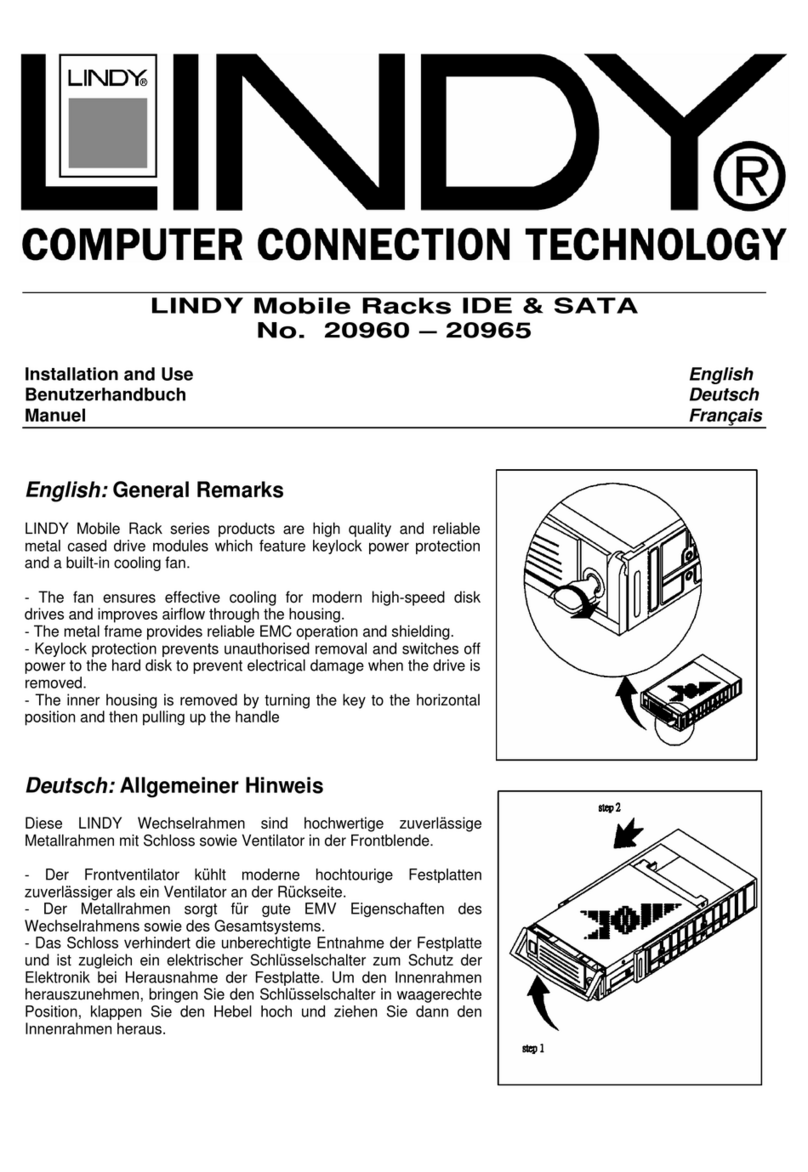
Lindy
Lindy 20960 Quick start guide
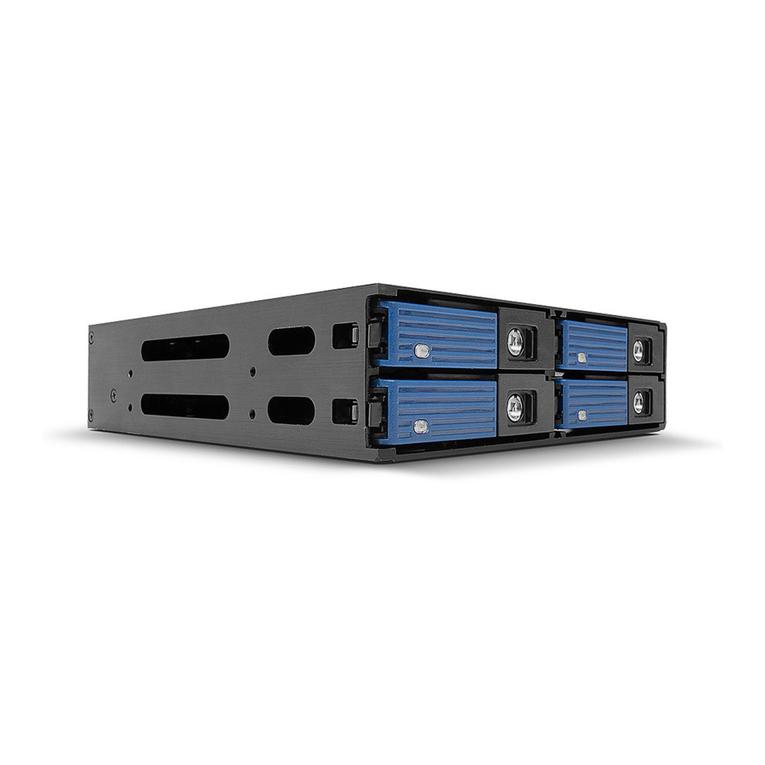
Lindy
Lindy 21983 User manual

Lindy
Lindy 70531 User manual
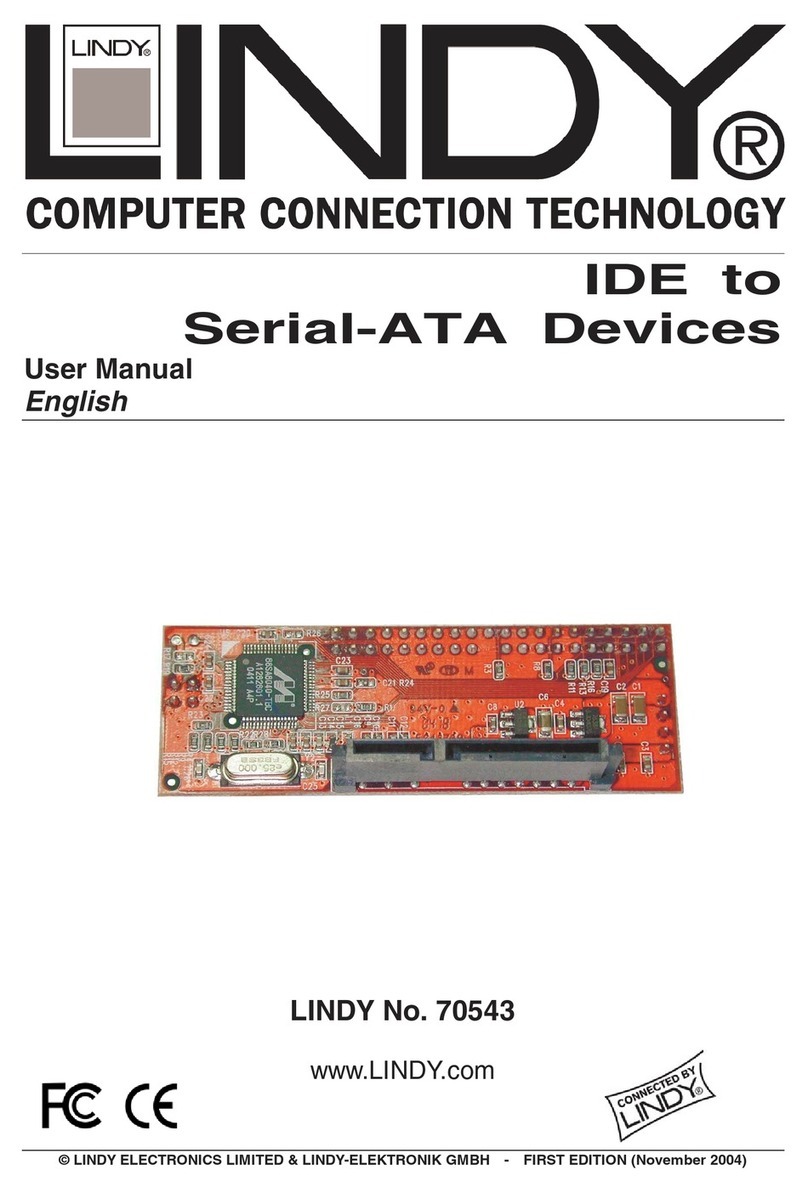
Lindy
Lindy 70543 User manual
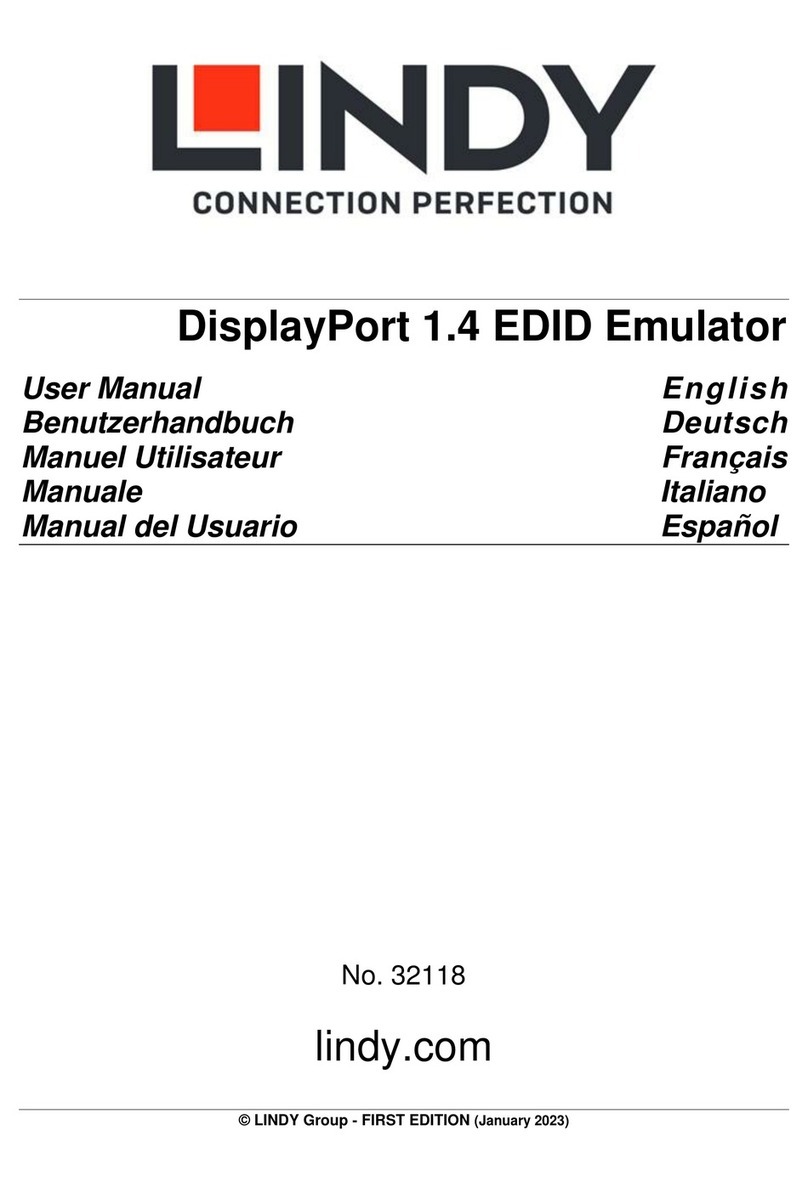
Lindy
Lindy 32118 User manual
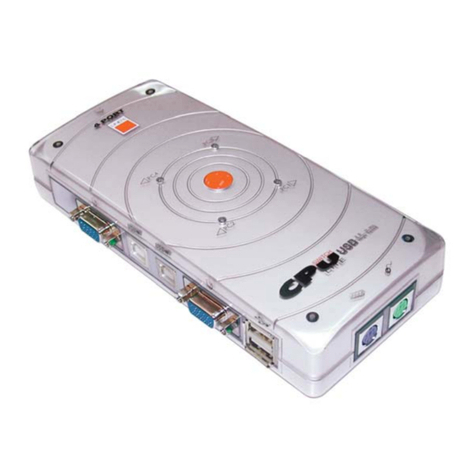
Lindy
Lindy CPU SWITCH LITE 32825 User manual

Lindy
Lindy 32120 User manual

Lindy
Lindy 51535 User manual
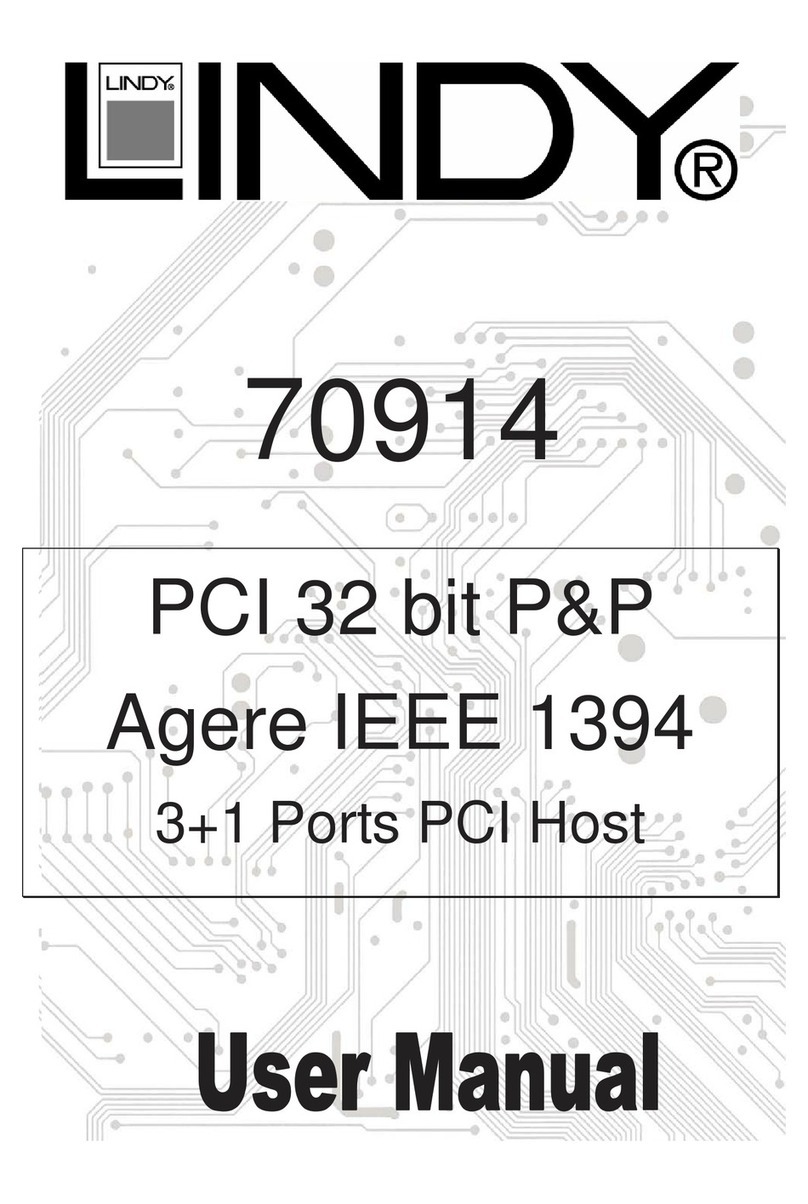
Lindy
Lindy 70914 User manual

Lindy
Lindy 20288 User manual
Popular Computer Hardware manuals by other brands
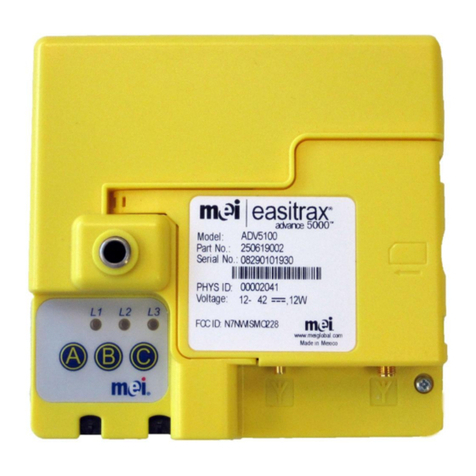
MEI
MEI easitrax ADV 5 Series Installation booklet

Asus
Asus PIKE 1078 user manual
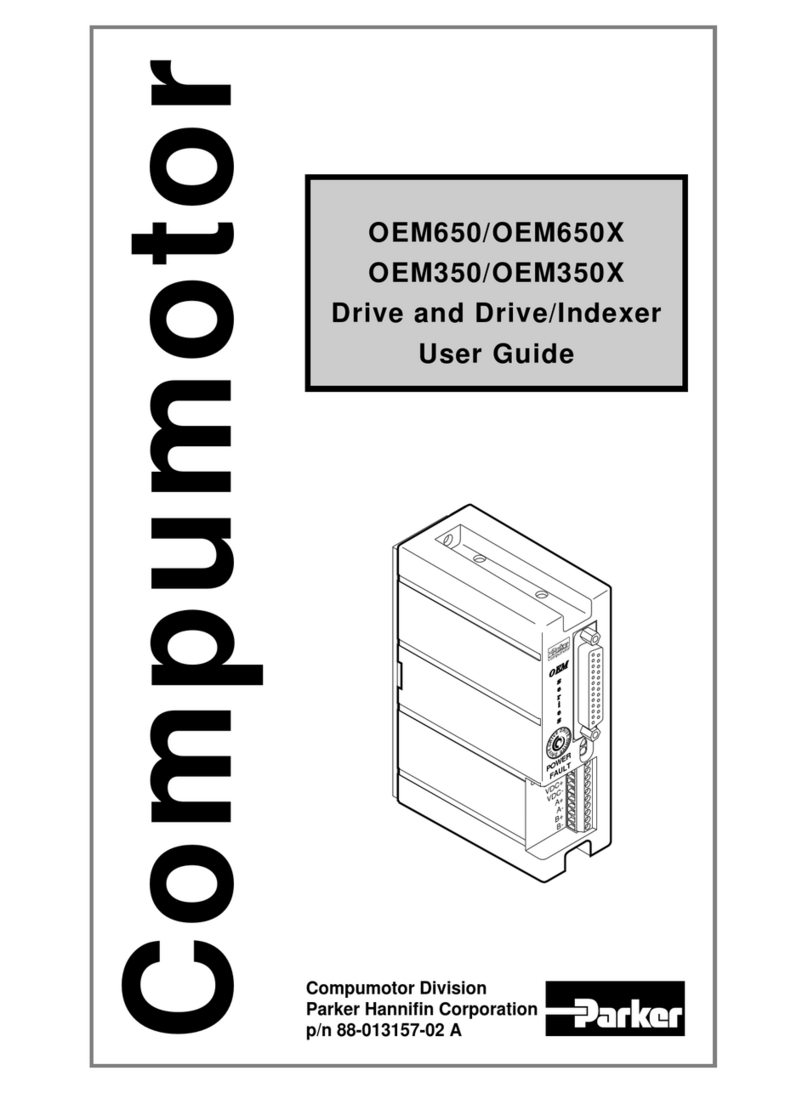
Parker
Parker Compumotor OEM350 user guide
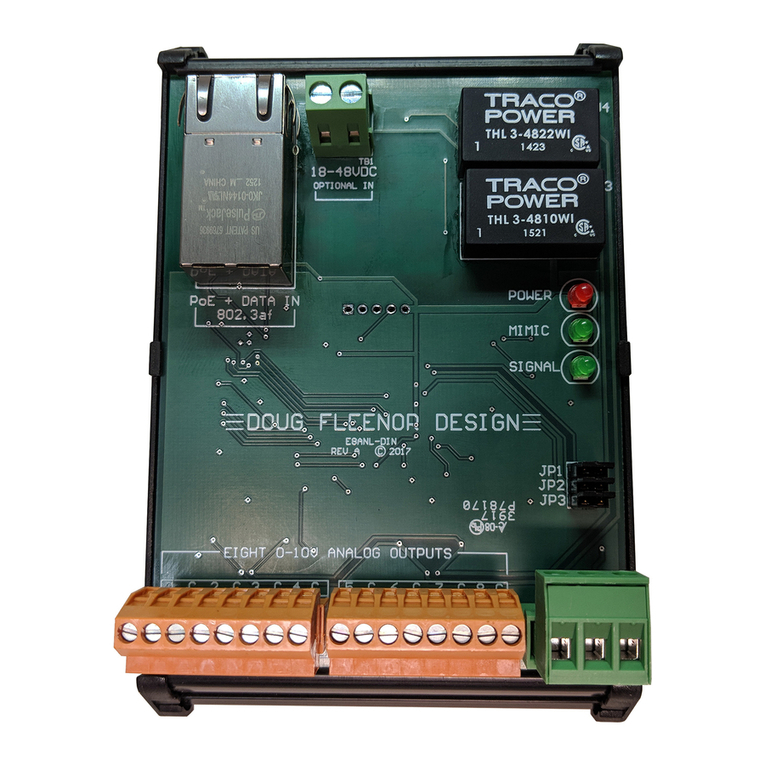
Doug Fleenor Design
Doug Fleenor Design E8ANL-DIN Configuration manual
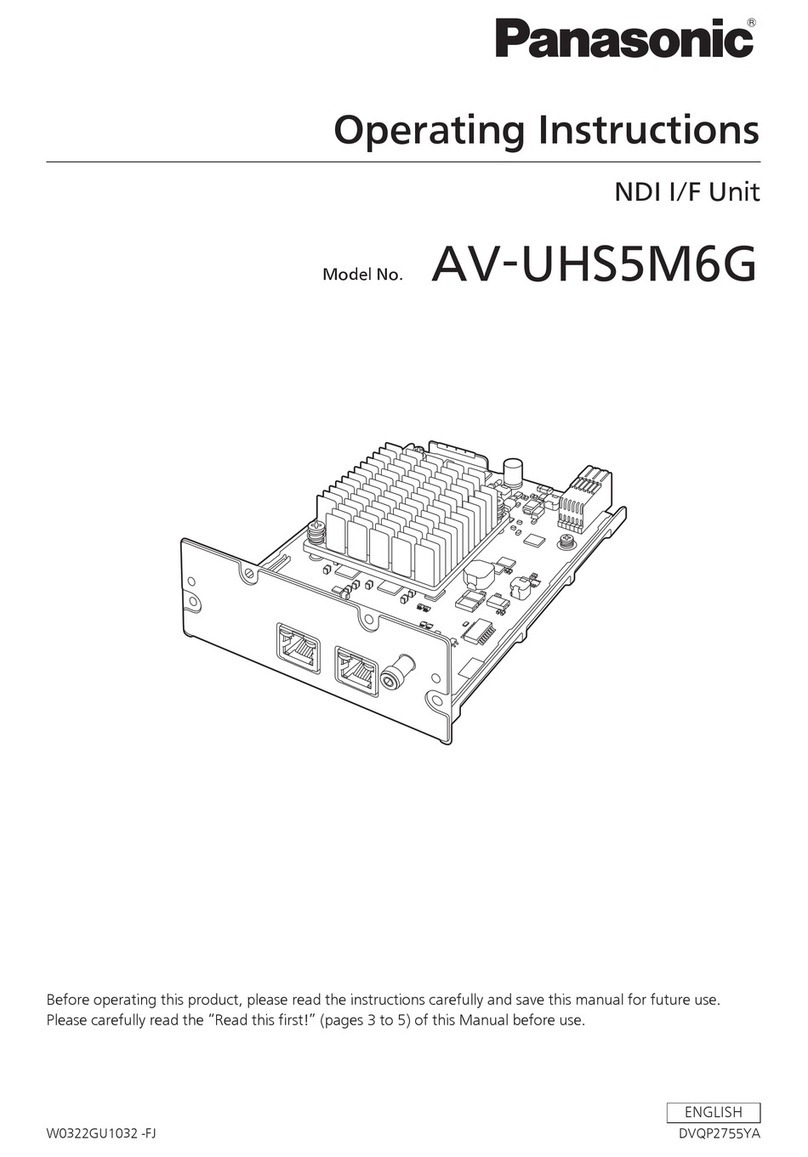
Panasonic
Panasonic AV-UHS5M6G operating instructions
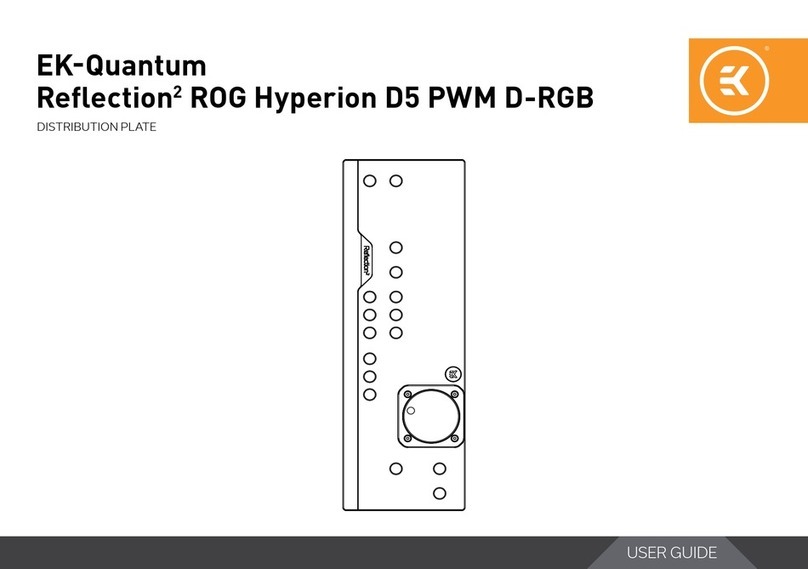
EK-Quantum
EK-Quantum Reflection2 PC-O11D XL D5 PWM D-RGB user guide
